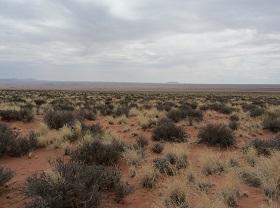Understanding longevity: From gene sequences to social inequity
03 April 2025
Published online 30 October 2013

Drylands cover 41% of the Earth's surface; this is expected to expand this century. The natural cycle of elemental nutrients in soil, such as carbon, nitrogen and phosphorous, could be disrupted by increased aridity brought on by climate change, according to a study published in Nature.
Manuel Delgado-Baquerizo led a team including Tunisian and Moroccan scientists that analyzed soil samples taken from 224 dryland locations across the globe. The study shows that aridity has a negative impact on the concentration of organic carbon and total nitrogen but a positive effect on the concentration of inorganic phosphorus.
Aridity can reduce plant cover, which may promote physical processes, such as rock weathering, over biological processes, such as litter decomposition. It is physical processes that tend to produce phosphorus and biological processes that provide carbon and nitrogen. The rapid rise in aridity predicted would uncouple these three biogeochemical cycles in drylands, which could have a negative impact on the 38% of the global human population who depend on these ecosystems.
"A decrease in the nitrogen concentration with increasing aridity may, for example, decrease the plant productivity, hence negatively affecting the food production and the capacity of these ecosystems to capture CO2 from the atmosphere derived from human activities," says Delgado-Baquerizo.
doi:10.1038/nmiddleeast.2013.198
Stay connected: